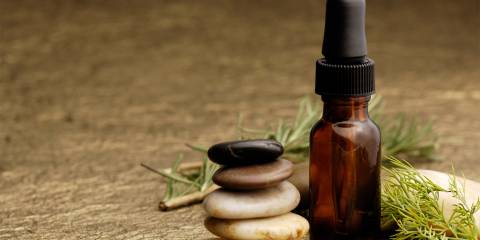Can you say aluminum zirconium trichlorohydrex gly? How about cyclopentasiloxane?
If you can read the list of ingredients in most conventional deodorants and roll your tongue around the names, you’re probably a chemist. You’ve also got 20/20 eyesight.
The basics
We’ve got roughly 2.6 million sweat glands, all pitching in to keep us cool. They do a pretty good job of it, too, but a frequent byproduct of all this effort is underarm wetness and odor. When it comes to the latter, the culprit is bacteria, which thrive in the moist, cozy environment under our arms.
The daily arsenal against these minuscule foes includes deodorants and antiperspirants, which do two different things:
- Deodorants tackle odor by masking it and by killing bacteria.
- Antiperspirants subdue wetness by plugging sweat glands.
Even so, you may not be as protected as you think—the Wall Street Journal reports that antiperspirants can reduce sweat by a mere 20 percent but still trumpet all-day protection. Meanwhile, you’re plying your glands with aluminum, parabens, and assorted synthetic villains, and we’ve all heard the concerns linking estrogen-imitating compounds with breast cancer.
If you aren’t itching to drag out your old double boiler and take a shot at creating your own elaborate deodorant, here’s a recipe that calls for three simple ingredients, plus a few additional suggestions that can help you stay cool and dry, and with a bonus: They contain ingredients you can pronounce.
Try this
A simple concoction of coconut oil, baking soda, and cornstarch lets you customize for your own scent preferences, too. Baking soda and cornstarch are champions at drying, and we’re all familiar with baking soda’s reputation for soaking up smells in the fridge.
Ingredients
- 1⁄4 cup of cornstarch
- 1⁄4 cup of baking soda
- 6 Tbsp of coconut oil
- Optional lavender or essential oil for scent
- 1 glass jar
Directions
- Mix 1⁄4 cup cornstarch with 1⁄4 cup baking soda.
- Add 6 Tbsp. coconut oil and mash together well.
- For scent, add a few drops of lavender or another essential oil.
- Store in a glass jar.
Look for herbal solutions
The next time you’re in the health and beauty section of your natural products store, check out deodorant labels. Often you’ll find time-tested ingredients with a history of traditional use.
Many herbs, for example, are loaded with antibacterial chemicals. Herbalist James A. Duke notes that rosemary and oregano are potent antibacterials (try adding these essential oils to the recipe above). Tea tree, sage, and lemongrass oils also kill bacteria.
Look for deodorants containing witch hazel, which helps sweat evaporate while shrinking and soothing pores. Hops (yes, the beer kind) extract is another unexpected antimicrobial that fights bacteria and crops up in natural deodorants.
Another option, a solid crystal deodorant formed of mineral salts, takes a benign approach to sweat. Rather than plugging pores, it leaves behind a layer of protection that keeps bacteria from forming.
Sweet-smelling news indeed.





